The Fake Food You Don’t Know You’re Eating (Part 1)

By Kresha, Contributing Writer
Good morning! Have you eaten your wood pulp today?
Now, I know I’m kind of weird in that I do make sure my kids eat dirt (as does Stephanie) and I try to fill them with as much offal as possible, but… wood pulp?
While clay and liver may be excellent for our children’s diets, processed wood pulp most certainly is not. Yet it’s found in everything from packaged hamburgers and shredded cheese to ice cream and breakfast cereal. (source)
This, of course, brings us to the point – there’s a lot of fake food out there these days, and I assume most of us would like to avoid it if at all possible.
So, when Stephanie asked the contributing writers this month to write about “tough topics” when it comes to food issues, I thought I’d take a closer look at thirteen of the most common fake food ingredients and additives and how we can avoid them. You can see the first five here and read the additional eight in part two.
Also, if you want to do further research about fake food ingredients, Food Babe, Fooducate, The Center for Science in the Public Interest, and Food Renegade (definitely check out her Decoding Labels series!) are just a few of many great places to start.
But most important? Your joy.
Seriously.
Yes, it’s important to know what’s in our food, to be educated and thoughtful consumers, and to be responsible parents who feed our children good, nourishing food.
But at the end of the day, if you’re stressing about the cookie your daughter brought home from a party because it was coated in artificial frosting or losing sleep over the fact that you bought frozen pizza in order to have quick backup meals on hand, then it’s just not worth it. Do as much as you can while maintaining deep joy – after all, what’s the point of living healthy if there’s no joy???
Want to avoid processed foods? Want to eat healthier? Grab a copy of my new book, The DIY Pantry, now at booksellers nationwide. You’ll find 150+ recipes for pantry staples that you used to buy but can now easily make at home, including crackers, cookies, condiments, cake mixes, beverages, breads, soups, and SO MUCH MORE. The book was just released this week, so find it on the “featured” table at your local bookseller or grab it at Amazon.
Common Fake Food Ingredients and How to Avoid Them
Basically, the best way to avoid fake foods is to eat real food! For the sake of this article, “real food” is merely food made from fresh ingredients that have been grown, caught or foraged rather than manufactured.
Also, you may recognize a few of these from our article last year when we published the list of 7 Foods to Avoid.
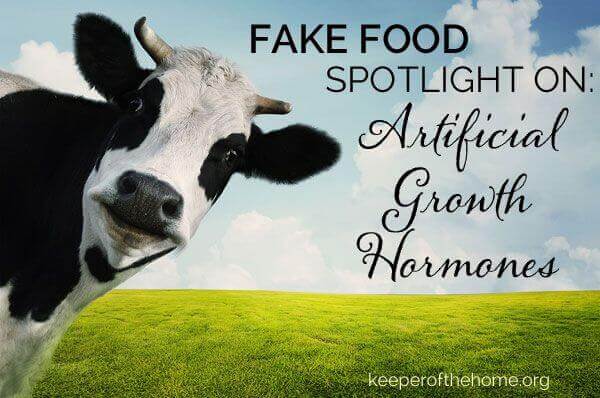
Artificial Growth Hormones / rGBH
Sources: rBGH Fact Sheet: Oregon Physicians for Social Responsibility (pdf) / A Sustainable Table: Hormones / A Sustainable Table: rBGH / International Journal of Health Services / USDA / USDA: Review of Agricultural Economics (pdf)/ FDA / FDA: Humane Society statement (pdf) / FDA: Consumer Policy Institute statement (pdf) / Organic Consumers Association
What they are:
Artificial growth hormones are hormones that are given to bovines in order to help them grow bigger and produce more milk. They are synthetic versions of the natural growth hormones that naturally occur in cattle. The version used for dairy cattle – often referred to as rBGH or “recombinant bovine growth hormone” – are genetically modified.
Although the USDA and FDA claim these hormones are safe, there is growing concern that hormone residues in meat and milk are harmful to the health of both humans and animals, as well as there are unknown long-term environmental effects (such as the leaching of hormones from bovine manure into groundwater and soil that will be used in organic food production).
How they affect us:
If growth hormones are present in the meat we eat and the milk we drink, then those hormones are taken into our systems as well. The effects are purported to range from problems in physical development, reproductive issues including early puberty and lowered sperm count in boys, and possibly even the development of certain cancers, especially breast, ovarian, prostate and colon cancers.
There is also increased risk for exposure to antibiotics. Cows that are given rBGH have a greater incidence of mastitis and other related issues, which are typically treated with antibiotics. Milk that is produced during the treatment period thus can include antibiotics, which are then in the milk we drink.
Where you’ll find them:
You can find artificial growth hormones in beef and dairy products, although it can be difficult to know from brand to brand which products may have come from hormone-treated cattle, as some states do not allow products to be labeled as “Hormone-Free.”
Currently, growth hormones are not allowed in any meat in the European Union, and no rBGH is allowed in the EU, Japan, Australia, New Zealand or Canada. Also, a “certified organic” farm or dairy is not allowed to use growth hormones by most organic certification standards.
How to avoid artificial growth hormones:
- Look for labels that state “no hormones” or “no rBST/rBGH.”
- Purchase certified-organic or better-than-organic meat and dairy, including raw milk if you’re so inclined.
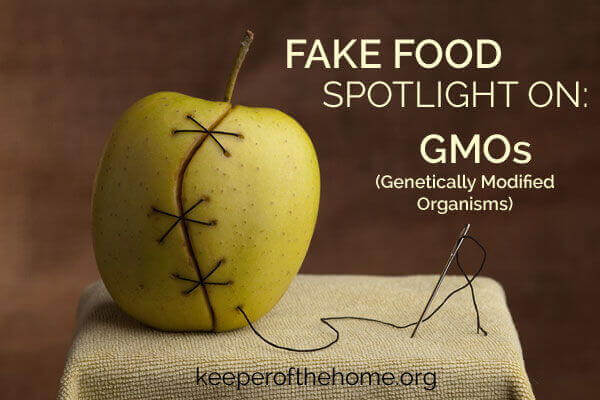
Genetically Modified Organisms (GMO’s)
Sources: The Institute for Responsible Technology / Non-GMO Project / Co.EXIST / Dr. Joseph Mercola / Just Label It / Keeper of the Home: 7 Foods to Avoid
What they are:
Genetically modified organisms, more often referred to as GMOs, are foods whose actual genetic structure has been altered in order to make the food last longer, resist pesticides or provide some other similar benefit.
How they affect us:
We have no idea how GMOs actually affect humans in the long-term – or animals or the environment, for that matter – as there has been almost NO testing done on the safety of GMOs.
And that is more or less at the heart of the matter: proponents of using GMOs claim there is no harm to humans, but skeptics say there haven’t been enough studies or long-term observations to actually accurately make that claim. In fact, most skeptics agree that there is the significant possibility that GMO foods will have serious detrimental long-term effects.
Where you’ll find them:
Genetically modified ingredients exist in more than 80 percent of processed foods today. In fresh foods, more than 90 percent of the crops growing canola, corn, cotton, papaya, soy, sugar beets, zucchini, yellow summer squash and alfalfa are genetically engineered. This also includes many animal products, as livestock feed commonly includes soy, corn, cottonseed and canola.
How to avoid them:
- Eat as little processed food as possible
- Look for “certified organic” – in the U.S. and Canada; anything labeled as “certified organic” is not allowed to have any genetically modified substances.
- Look for a label that identifies the item as genetically modified or including GMO ingredients. Nearly every developed nation in the world – with the exception of the United States and Canada – requires GMO food to be labeled, so you’ll be able to decipher it as such. Obviously, if you’re in North America, this option isn’t available to you.
- Use non-GMO versions of your favorite foods. For example, sugar beets are often genetically modified, but cane sugar is not, so use products and ingredients that specifically state “cane sugar” on the label.
- Buy as much of your diet from the local farmer’s market as possible and ask the farmer if they used GMO seed or feed.
- Keep this list of likely GMO foods in your back pocket when you go shopping.
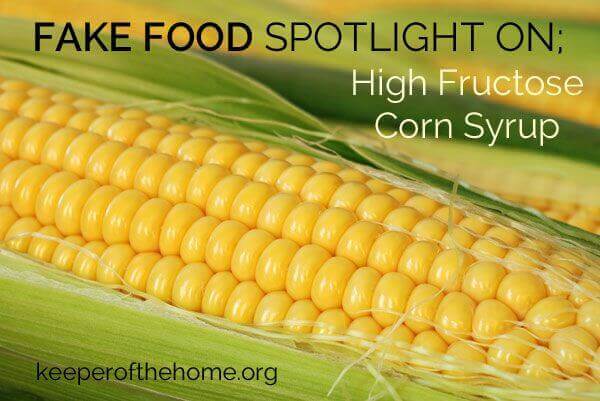
High-Fructose Corn Syrup (HFCS)
Sources: Food Renegade (1) / Food Renegade (2) / Dr. Joseph Mercola (1) / Dr. Joseph Mercola (2) / UCLA / Grist / Dr. Mark Hyman / Canadian Association for Neuroscience / Huffington Post / Princeton Neuroscience Institute / The Kitchn: The Food Science of Corn Syrup
What it is:
Corn syrup is a highly-processed syrup made from cornstarch and is the darling of the food industry because it is both cheap and versatile. It helps candies and sweets stay soft without weeping or turning grainy, it sweetens without adding a flavor of its own, it softens the texture of breads and other baked goods, and it extends the shelf life of multiple products. It is generally made from genetically modified corn.
How it affects us:
High fructose corn syrup helps you overeat, makes your liver pretend you’re a raging alcoholic, causes memory loss, interrupts your ability to process emotion, is possibly about as addictive as cocaine, and helps you gain fat, especially around the belly.
It is suspected by some researchers that the current obesity epidemic in the United States is directly linked to the effects of high fructose corn syrup and its ubiquitous nature.
And that ubiquity is a large part of the problem. If a person eats a product with HFCS only every once in a while, the toxicity load on the body is minimal. But because high fructose corn syrup is in nearly every processed food available, the amount of sugar the body has to deal with can actually reach toxic levels.
Where you’ll find it:
In pretty much everything. It can be found in breads, yogurts, salad dressings, candies, juices, cereals, condiments, sodas, hot dogs and much much more.
And as Dr. Mark Hyman says, it’s a ‘red flag ingredient’: “The main reason you should give up high fructose corn syrup is that it’s a big red flag for very poor quality food. If you see this ingredient on a label, I guarantee you the food is processed junk.”
How to avoid it:
- Avoid processed foods and read labels carefully.
- Cook as often as possible from scratch.
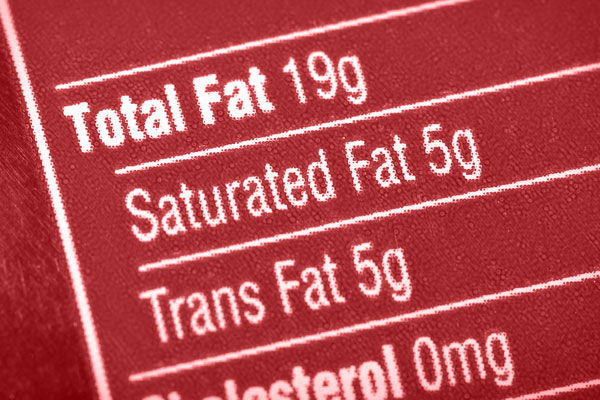
Trans-Fats and Hexane-Expelled Oils
Sources: Wellness Mama / Cornell University / Journal of Lipid Research / Cornucopia Institute / Wikipedia: Hexane / Harvard School of Public Health / Spectrum Organics / Fooducate / KMEC Engineering / Food and Agriculture Organization of the United Nations / Nature’s One
Stacy also wrote about hydrogenated fats a few days ago – don’t miss that article, too.
What they are:
“Trans-fats” is one of the biggest buzz-words in the health world today. Basically, any oil that should be liquid at room temperature but is chemically changed in order to be solid at room temperature is a trans-fat.
A hexane-expressed oil is any oil that is removed from its seed by being bathed in hexane, a petroleum-based solvent, rather than being pressed, such as olives, or placed in a centrifuge, such as avocados.
Hexane is used because typically these oils are very difficult to extract and the hexane method is used industry-wide because it is extremely effective, usually extracting at least 99% of the oil from the seeds.
This is the method used for most cooking oils, including canola, cottonseed, soybean, and corn, and for oils for the hydrogenation process – namely the trans-fats mentioned above.
From a health standpoint, the hexane method is questionable both because the oils are in the presence of a toxic solvent but also because the oil must then undergo exposure to extreme heat in order to remove the hexane. This denatures the oil and makes it severely rancid, so the oil is then bleached to improve the color and remove the rancid smell.
This results in a tasteless oil (which is why it is used so predominantly in cooking), but it also means it’s highly oxidized, which wreaks havoc on our cell membranes.
As an interesting side note, once the oils have been extracted from the seed, the remaining protein and hull of the seed are often sold to be used for animal feed, so if we later eat those animals, we can be exposed to hexane residues a second time.
How it affects us:
Trans-fats affect us because they confuse our body’s systems with how to process them.
In nature, fats exist in various forms.
There are fats that are naturally liquid at room temperature, such as olive oil, fats that are liquid or soft at room temperature, such as the fats in avocados and nuts, and fats that are naturally solid, such as coconut oil and lard.
The liquid and soft fats are typically called “monounsaturated” or “polyunsaturated” (polyunsaturated are also then divided into Omega-3 and Omega-6 oils) and the solid fats are “saturated” fats.
Now, our bodies need fats in order to function – everything from brain function to cell reproduction to hormone production and vitamin synthesis rely on fats.
Surprisingly, the fats in our bodies are about 97% saturated and monounsaturated fats, with the remaining 3% being polyunsaturated.
In order to function properly, our bodies need to be fed the fats they need in the ratio in which they naturally exist, but – our bodies being the miraculous machines they are – they will use whatever they’re given in order to provide for the body’s immediate needs to the detriment of our long-term health.
So, this is where trans-fats come in. Our bodies know what to do with each type of fat in its natural form. But when you take in a fat that naturally is in one form (liquid) and essentially usher it into the body in a Trojan horse of sorts (telling it that it’s a saturated fat), the body can’t process it properly and therefore causes a host of effects, most predominately obesity, inflammation and heart disease.
In the case of hexane-expressed oils, the effects can range from inflammation to skin cancer.
Vegetable oils that are derived from canola, soy and others are very high sources of Omega-6 fatty acids, which our bodies need only in small doses (and are better sourced from foods such as oily fish), and due to being exposed to excessive heat during extraction, are highly rancid, which is what causes inflammation and cell mutations that can lead to skin cancer.
Where you’ll find them:
Trans-fats are in most processed foods, including packaged cookies, breads, crackers, cereals, margarine, frozen foods, fried foods and many fast foods.
Hexane-expelled oils are in any food that includes canola oil, soybean oil, cottonseed oil, safflower oil, sunflower oil, corn oil, peanut oil, “vegetable” oil or grapeseed oil. Most infant formulas that include ARA and DHA include hexane-expelled DHA and ARA from algae or fungus.
Trans-fats can be tricky to spot because in the U.S., a company may label their products as having “0 grams of trans-fat” as long as it has less than 0.5 grams PER SERVING. (In Canada, it’s less than 0.2 grams.)
Thus, if a company can change its serving size to be small enough to fit that legal description, they can still label it as “0 grams,” but you’re still getting trans-fats.
How to avoid them:
- Use fats that are naturally solid at room temperature, such as butter, coconut oil, and lard;for cooking, baking, and spreading.
- Use fats that are naturally liquid at room temperature, such as olive oil, for salad dressings and dips.
- Avoid food that have “hydrogenated” or “partially hydrogenated” in the ingredients.
- Read labels for seed oils, including canola, soybean, “vegetable” oil and the others listed above.
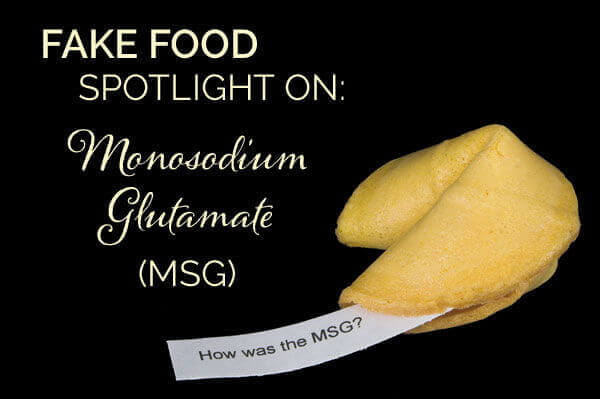
Monosodium Glutamate (MSG)
Sources: Science Creative Quarterly / Center for Science in the Public Interest / Truth in Labeling: How MSG is Manufactured / FDA / Dr. Joseph Mercola / Keeper of the Home: 7 Foods to Avoid
What it is:
Monosodium glutamate is a flavor enhancer. It gives the sensation of the savory flavor, umami, and registers a pleasure sensation, which is why foods with MSG are commonly recognized as “addictive” or “craveable.”
Glutamates are amino acids that naturally occur in the body and their very important job is to transport messages. They’re sort of like switches: in their presence, various bodily functions in the brain, nervous system, eyes, and certain organs get the message to “switch on.”
However, by adding glutamates to our systems via our diet, the amount of glutamates in the body is far out of proportion. Turn them on all at once, and you’ve got more than what your body can deal with at one time.
This is why it’s classified as an excitotoxin, meaning that it can overexcite your cells, which can cause brain and nerve damage, irregular heartbeat, skin rashes, and potentially even triggering or worsening learning disabilities, Alzheimer’s disease, Parkinson’s disease, Lou Gehrig’s disease and more.
And because it sends pleasure sensations to the brain, it doesn’t really matter what food it’s in – whatever it is, our brains will be told it’s delicious and nutritious!
Thus, over the last few decades, food manufacturers have increasingly reduced the amount of real food in processed foods, opting for cheaper fillers such as wood pulp (cellulose) and TVP (textured vegetable protein).
How it affects us:
Many people don’t notice any immediate effects from MSG (the FDA categorizes it as “Generally Recognized as Safe”), but as described above, a number of others report headache, nausea, weakness, a burning sensation in the back of neck and forearms, wheezing, changes in heart rate and difficulty breathing.
MSG can also lead to overeating, as MSG stimulates appetite by inducing insulin release so that glucose is metabolized, whether or not you have consumed anything with carbohydrates (sugars). As a result of high insulin concentrations, your blood sugar drops and you end up being hungry again only hours later.
Where you’ll find it:
MSG lurks in the nearly every boxed, canned or fast food. Manufacturers are only required to list it on the label if they use the exact ingredient, “monosodium glutamate,” but there are more than 40 other commercially produced glutamates that function similarly.
How to avoid it:
- Avoid eating processed or packaged food.
- Buy fresh foods and foods that list “sea salt” as a flavor additive.
- Look for and avoid any ingredient with the words “hydrolyzed,” “yeast extract,” “glutamic acid,” “isolated,” “protein,” or “natural flavors.” Also, if “Disodium 5’-guanylate (E 627),” “Disodium 5’-inosinate (E-631),” or “Disodium 5′-ribonucleotides (E 635)” appears on the label, MSG is present, as those ingredients only work in synergy with MSG and have no other function. See the full list of names at Truth in Labeling.
;
What food additive or “fake food” concerns you most? What is the most surprising ingredient you’ve ever encountered?
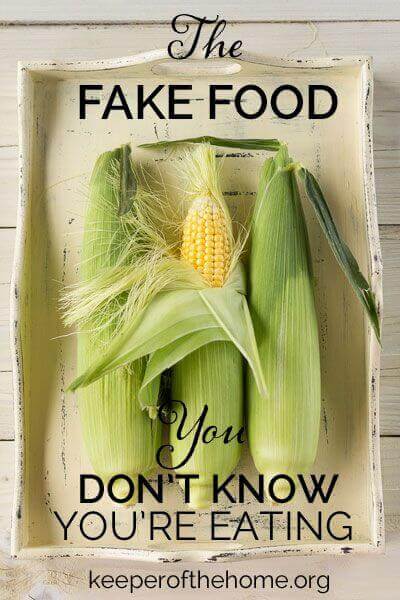



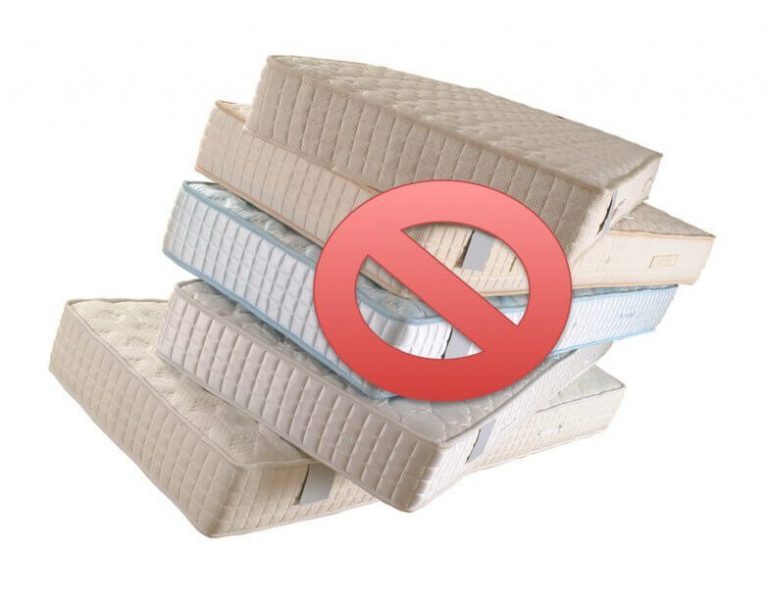

Thank you. These are all foods that I try to avoid. I live here in Panama now (since September) and the one thing I miss is my delicious raw milk back home. (Here is a link to one of my neighbor’s homes out here, it is so cool… huge homes next to very modest homes and then next to shacks, lol all in the same neighborhood http://trypanama.com/listings/beach-home-in-country-with-pool-on-malibu-beach-0020/ )
Anyway, the good thing here is that the cows are A2 breeds (A1 casein from Holstein cows is the bad one)…. and grass fed with no hormones, but the raw milk here tastes so bad I would rather drink goat milk (and I am not a fan of goat milk). So I get the pasteurized stuff….
The meats are not allowed to have hormones or antibiotics, but the beef here is really disgusting no matter the cut you get. The chicken is delicious. 🙂
One thing I have been struggling with since I have been here is the amount of junk food they have in their stores. From what I have heard, it is a fairly new development, the folks here are so interested in becoming “Americanized”. They all want to be like the United States…. eating what we call junk processed food, they call convenience and delicious. They want to all learn English, and dress in the same fashions as the U.S.
Sad, because the local culture is so beautiful on its own and is being tainted with the US influence.
Thanks for all the information, and it was very clearly written. Here on the prairie we eat meat from our own cows, or elk and when I read articles like this is make me so glad we can. It’s also a benefit that we love our of town, fast food and restaurants aren’t really an option for us. We share a garden with our neighbor and grow a few vegetables ourselves. I also appreciate you cutting us some slack too. I simply can’t afford all organic fruit and veggies in Wyoming for our large family, and I often feel guilty. I know that it is healthier than not eating them at all, but it’s nice to hear from someone else!
I SO look forward to the day when we can hunt like you describe and your garden sounds beautiful! 🙂
awesome info!! Thank you!
Thanks for this article, Kresha, it was very well done. Reading this, I’m glad I live in Canada and am married to a hunter! That being said, sometime a frozen pizza appears on our table — we like the recently reformulated McCain ones (frozen fries, too) that have a very short, all real ingredients list.
I hope part 2 includes Aspartame. Back in the 80s, when Fresca and Tab first came out, that’s what we drank. When I was 5 (I’m 34 now), I had two seemingly random seizures. A CT scan showed nothing, and my doctor suggested it could be the aspartame, so I avoid it like the plague. It is so hard to buy “regular” gum these days — even Doublemint and Juicy Fruit now have aspartame along with sugar — so I’ve turned to Xpry from the health food store, which is made with Xylitol.
Thanks again!
I’m in Canada too – and I TOTALLY hear you. And what’s this about McCain reformulating their pizza??? I haven’t been down the frozen food aisle for so long, I haven’t looked, but now I may need to take a look. 😉
And yes, Part 2 does include artificial sweeteners. They’re everywhere! 🙂
Thanks for your comment!
What an excellent article! Thank you so much, Kresha, for working so hard to put together such a terrrifc, comprehensive overview for us with all the links for furthering researching. I’m definitely sharing this via social media! And congrats on your new book! So excited for you! Definitely will spread the word about it. Blessings, Kelly
Aw, thanks, Kelly! You are such an encourager. 🙂
Yes, those are all things we try and avoid. For some reason I’m finding the wood pulp the hardest, mostly because it’s in so many organic and natural products!
Yes, it IS! I’m amazed where that stuff lurks…. !
So does that mean all avocado and grape seed oils are hexane expressed? I’ve been using grapeseed and avocado to stir fry my veggies in because when I heat olive oil up it gives me a tummy ache :(. Is this what expeller pressed means?
No, expeller pressed means it was actually pressed, so no hexane. (Yay!) But yet, unless the avocado or grapeseed oil is listed as “expeller pressed,” it was extracted with hexane.
There are a number of good brands that do avocado by expeller-pressing, so just check your labels. 🙂
Very good info…thanks kindly for sharing and for all you do to help us eat well and stay healthy. You are a blessing.
Where is your evidence for these things? You are making broad, sweeping statements about these foods without giving any sort of hard evidence, not so much as a scientific journal article to back up your claims. While I whole-heartedly agree that we need to be careful what we eat and examine food labels meticulously, I wish you would back up your claims. It makes it sound misleading. I see this in multiple places, but here is one example:
“Basically, any oil that should be liquid at room temperature but is chemically changed in order to be solid at room temperature is a trans-fat.”
I know that this statement is patently untrue. Crisco, as we all know, is nothing but liquid oils that are chemically changed to become solid at room temp (they whip hydrogen into the oils). According to your statement, Crisco should be 100% trans fat–but it’s not. As a matter of fact, Crisco contains 0% trans fat according to this AP news story. (http://www.nbcnews.com/id/16795455/ns/health-diet_and_nutrition/t/crisco-drops-trans-fats-shortening-formula/)
I want to agree with your claims. It’s obvious that many of the foods we eat as Americans are highly processed and contain chemicals and other substances in them that are dangerous in high quantities. But I think it would help if we had hard, scientific evidence to prove what you’re saying. Until then, I’ll continue to buy the affordable products at the store that might contain some corn syrups and GMO’s. I’ll side with the FDA until science shows otherwise.
I find your comments interesting. Just because the “facts” were not otherwise foot noted, they are still there. All you have to do is read and watch TV these days. Heck even talking to people about food you can learn new facts all the time. You do know what FDA stands for right? So if they OK the foods we eat, and the pills we take, that’s OK in your book? And then years down the road, all the law suits that ensue due to the lack of knowledge, or the lack of scientific data in the beginning. The attorney’s are making a fortune off the FDA due to their misleading foods and drugs. Monsanto would be a good one to call out, or off the top of my head YAZZ birth control and PMS support. Why do you think our great grandparents could eat what ever they wanted and not get sick? Because the food wasn’t contaminated with pesticides and hormones, so they didn’t have to take 12 pills a day for all the ailments they aquired.
Actually, I’ve linked to a number of scientific journals in the links provided (as well as other websites where other journals are linked), so please feel free to point out which ones aren’t up to snuff.
And also, you’re exactly right – I did write this article with broad, sweeping claims because really each of these ingredients needs its own post to look at meticulously. And that’s exactly why I started the sentence you quoted with “Basically….” It’s specifically a sweeping statement to create a broad summary of all the information underneath it. Too broad – perhaps, but it was written that way intentionally.
And perhaps, actually, you can help me (all of us). In all my reading about trans-fats over the last few years, I have yet to run across a concise AND precise definition of trans-fats in layman’s terms. I’m happy to discuss the placement of the hydrocarbon atoms and how they differ between the natural trans-fats that occur in a ruminant’s stomach and when they are chemically hydrogenated, but that doesn’t necessarily help the mom who is trying to sort through the torrent of information that is coming at her as she is trying to figure out how to feed her family in healthier ways.
So, I sat for a LONG TIME with that sentence I was writing this article, trying to figure out how best to state in non-scientific terms and in one concise sentence what trans-fats are – and you can see what I came up with. So here’s how you can help – how would YOU best describe trans-fats? I KNOW all of us would benefit from good discussion.
This is one of the best abstracts I’ve come up with to start from – http://onlinelibrary.wiley.com/doi/10.1111/j.1541-4337.2008.00045.x/full
And a side note about the NBC link you provided – that’s a perfect example of how a label can say “0 trans fats” and yet contain trans-fats. The NBC story itself tells how the Smuckers company, the makers of Crisco, have reduced the trans-fats, but not removed them. What they fail to mention, however, is HOW they got reduced the trans-fats: it wasn’t by returning to healthy fats, but merely finding another way to solidify liquid fats that don’t create a result that fits the current legal description of “trans-fats.” The new way to make Crisco is to interesterify the oils, rather than hydrogenate them – namely, instead of whipping them with hydrogen, they change the chemical structure of each molecule, a practice that early researchers and some doctors say is even WORSE than trans-fats from a long-term health standpoint.
Here’s one 2010 study from the Journal of the American College of Nutrition I have found particularly enlightening – http://www.tandfonline.com/doi/abs/10.1080/07315724.2010.10719842#.UsyyprSOfTg
Here’s a very short statement from Dr. Sears – http://www.drsears.com/tabId/399/itemId/13942/Interestification.aspx
Thank you for your comment!
I discovered the other day at my in-laws’ house that gourmet jelly beans contain shellac in the ingredient list. I was pretty grossed out!
Are you serious? Gack.
I was going to say shellac and then I read this comment! I found it on a bag of so-called “natural” dark chocolate covered ginger, which up until that ingredient, was a very good list. I wonder if it’s used on mass market chocolate because it’s not tempered well so it needs an added shine to look like better quality?
Aspartame is another big one we stay away from, and we definitely keep it out of our young kids diets too
Thanks for such a conclusive article!!
With regards to the hormones in chicken and milk, why does it say on the product that th FDA does not allow hormones to be used? This is quite confusing! Thanks!
Well, if I understand the complex world of food labeling correctly, each state governs its own laws about food labels, even though federal agencies such as the FDA and USDA have their own policies regarding food safety and labeling.
Hormones are not allowed to be used in chicken according to the FDA (http://1.usa.gov/1dBugVD), but milk is regulated by each state, although the FDA has a statement on the voluntary labeling of milk that is NOT treated with rBST (http://1.usa.gov/KNsaey – see the link under “Specific Products”).
So, I don’t know if that is immediately helpful or not, but those are the thoughts that come immediately to mind. 🙂
Not in the food spectrum but… what I remember finding out as the most disturbing was that a lot of creams that tout diminishing wrinkles and operate under the whole ‘youthful skin’ banner apparently often use cells from aborted fetuses in the cream base. Regardless of one’s stand on abortion this is pretty awful.
I recently came home with my adopted daughter from the Congo and although she’s not yet 6 (we think) she’s showing signs of the start of precocious puberty most likely from the nutrition boost she’s had. I’m in Canada so luckily have more options for hormone-free dairy although when there’s ‘modified milk ingredients’ in the product apparently those can contain hormones and don’t need to be listed. Also for her I need to avoid all soy products and am being extra careful about where those hidden hormones in food are.
I can say, after growing up in the city during the 60s when “fake” was fashion, that my life now living in the country is king. My children went thru school/college healthy, with far less symptoms of flus/colds, than many of their friends. The difference, one daughter said just the other day;”we had to do chores in order to help get food for us and ‘pets’, but we learned to be responsible and were never bored. ” I suspect that nowadays, technology has taken away more from the health aspects of life than good old fashioned family DIY.